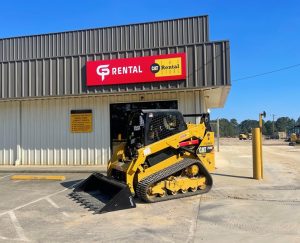
In the world of construction, having the right equipment is crucial for the success of any project. However, deciding whether to rent or buy construction equipment can be a daunting task for contractors and project managers. Both options come with their own set of advantages and disadvantages, and making the right choice depends on various factors such as project duration, budget constraints, and specific equipment needs.
Renting Construction Equipment
Renting construction equipment has become increasingly popular among contractors for its flexibility and cost-effectiveness. Here are some key advantages:
Cost Savings: Renting equipment eliminates the need for a significant upfront investment, making it ideal for projects with limited budgets or short durations. Instead of bearing the full cost of purchasing equipment, renting allows you to pay only for the duration you use it.
Flexibility: Renting provides flexibility in accessing a wide range of equipment options to suit specific project requirements. Whether you need excavators, bulldozers, or cranes, rental companies offer a diverse fleet of machinery that can be tailored to your needs.
Maintenance and Upkeep: One of the major perks of renting is that maintenance and upkeep are typically handled by the rental company. This saves you from the hassle and expense of servicing, repairs, and storage associated with owning equipment.
Access to Latest Technology: Renting gives you access to the newest equipment models and technology without committing to long-term ownership. This ensures that your projects benefit from the latest advancements in efficiency and productivity.
While the benefits of renting make it a popular choice, there are some drawbacks to consider when renting construction equipment, including:
Long-Term Costs: While renting may seem cost-effective in the short term, frequent or long-term rentals can add up over time, potentially surpassing the cost of purchasing equipment outright.
Limited Availability: Depending on demand, the specific equipment you need may not always be available for rent when you need it. This could lead to project delays or compromises in equipment selection.
Lack of Ownership: Renting means you do not own the equipment, which may limit your ability to customize or modify it to suit your unique requirements.
Buying Construction Equipment
Like renting, owning construction equipment offers its own set of advantages and disadvantages. Some advantages to consider include:
Long-Term Investment: Purchasing equipment is a long-term investment that can provide substantial cost savings over time, especially for projects with recurring equipment needs. Once you’ve paid off the initial purchase cost, the equipment becomes an asset that can contribute to your business’s value.
Greater Control: Ownership gives you full control over the equipment, allowing for customization, modifications, and scheduling of maintenance according to your preferences and project timelines.
Availability: You have unrestricted access to the equipment whenever you need it, eliminating the risk of delays due to rental unavailability.
Even with these benefits, buying construction equipment also comes with its challenges:
High Initial Cost: Purchasing construction equipment requires a significant upfront investment, which may not be feasible for small businesses or projects with limited budgets.
Maintenance and Storage: As an owner, you are responsible for the maintenance, repairs, and storage of the equipment, which can incur additional costs and logistical challenges.
Depreciation: Equipment ownership is subject to depreciation, which can impact its resale value over time. Keeping up with technology advancements may also require periodic upgrades to maintain competitiveness.
Ultimately, the decision to rent or buy construction equipment depends on various factors such as project duration, budget constraints, and long-term equipment needs. Renting offers flexibility and cost savings for short-term projects, while buying provides greater control and potential cost savings for long-term investments. When making this decision, weighing the pros and cons of each option is essential to determine the best choice for your specific project requirements.